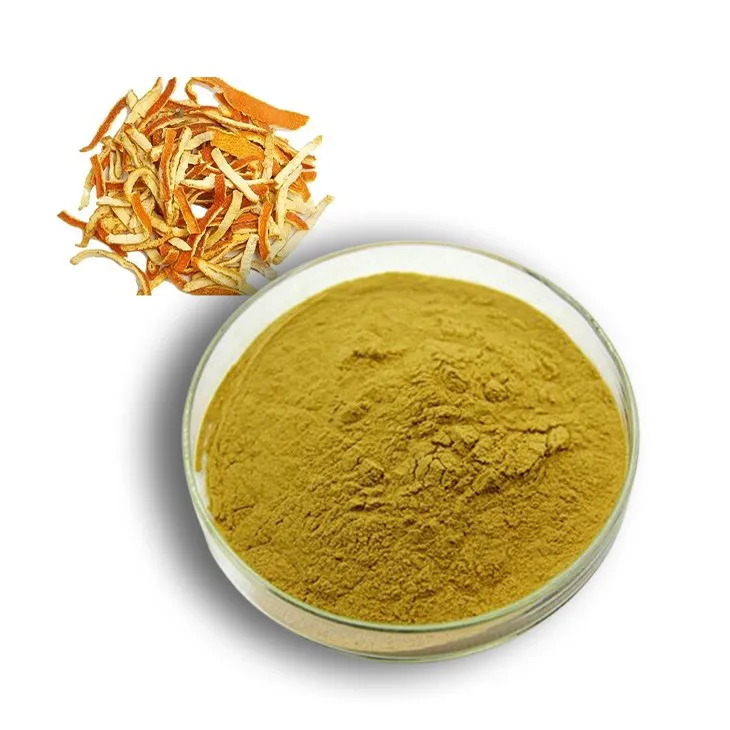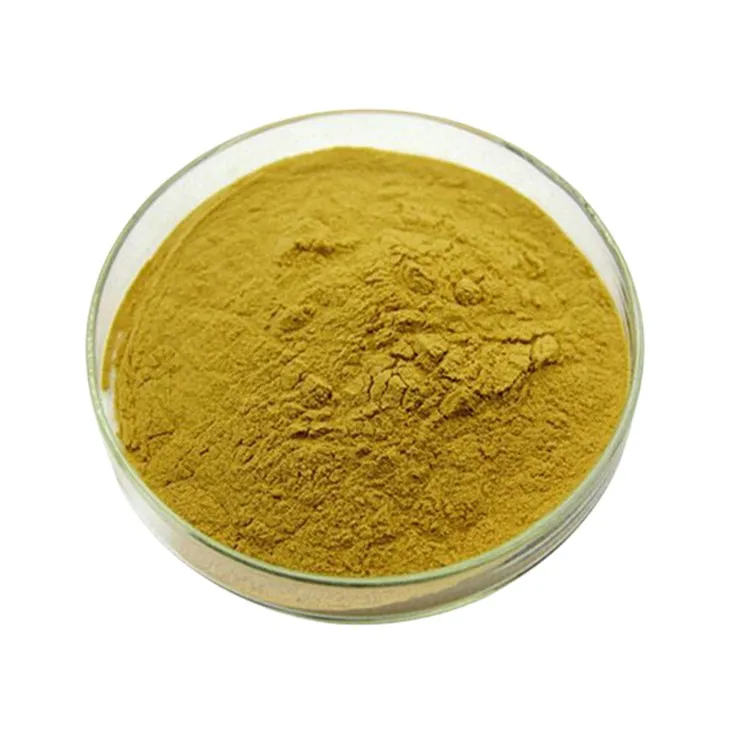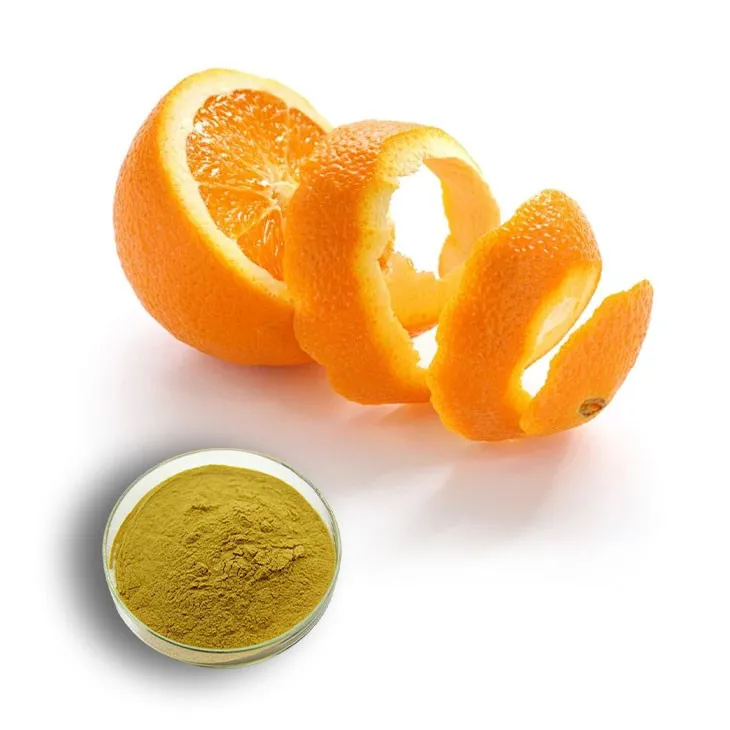- 0086-571-85302990
- sales@greenskybio.com
Supercritical Carbon Dioxide Extraction of Hesperidin.
2024-11-28

1. Introduction to Hesperidin
Hesperidin is a significant flavonoid that is predominantly found in orange peels. Flavonoids are a large class of plant secondary metabolites with a wide range of biological activities. Hesperidin, in particular, has been associated with numerous health - promoting properties. It has antioxidant, anti - inflammatory, and anti - atherosclerotic effects, among others. These properties make it a valuable compound in the fields of pharmaceuticals, nutraceuticals, and cosmetics.

2. Traditional Extraction Methods and Their Limitations
2.1 Solvent Extraction
Solvent extraction is one of the traditional methods for extracting hesperidin. Commonly used solvents include methanol, ethanol, and acetone. However, this method has several drawbacks.- Residue Problem: Solvents may leave residues in the final product, which can be harmful if the extract is intended for human consumption or use in pharmaceuticals.
- Low Selectivity: It may extract other compounds along with hesperidin, requiring further purification steps.
- Environmental Impact: The use of large amounts of organic solvents can have a negative environmental impact, especially in terms of solvent disposal.
2.2 Hydrothermal Extraction
Hydrothermal extraction involves the use of high - temperature and high - pressure water to extract hesperidin.- Degradation Risk: The high - temperature conditions may cause degradation of hesperidin, reducing its bioactivity.
- Impurity Issue: It can also extract a large number of impurities, making the purification process more complex.

3. Supercritical Carbon Dioxide (CO₂) Extraction: An Overview
Supercritical CO₂ extraction is a relatively new and innovative technique in the field of extraction. Supercritical fluid is a substance that is at a temperature and pressure above its critical point. For CO₂, the critical temperature is around 31.1 °C and the critical pressure is about 7.38 MPa. Under these supercritical conditions, CO₂ exhibits unique properties that make it an excellent solvent for extraction.
3.1 Properties of Supercritical CO₂
- Low Toxicity: CO₂ is non - toxic, which is crucial when the extract is used in products for human consumption or in the pharmaceutical industry.
- Non - Flammability: It is non - flammable, reducing the risk of fire hazards during the extraction process.
- Easily Removable: After extraction, CO₂ can be easily removed from the extract by simply reducing the pressure. This leaves no harmful residues, which is a significant advantage over traditional solvents.
- Tunable Solvent Properties: By adjusting the temperature and pressure, the solvent properties of supercritical CO₂ can be tuned. This allows for high selectivity in the extraction process.

4. The Supercritical CO₂ Extraction Process of Hesperidin
4.1 Preparation of Raw Materials
The first step in the supercritical CO₂ extraction of hesperidin is the preparation of raw materials. Orange peels, which are the main source of hesperidin, need to be properly dried and ground into a fine powder. This increases the surface area of the raw material, facilitating the extraction process.
4.2 Extraction Parameters
- Temperature: The temperature is an important parameter in supercritical CO₂ extraction. For hesperidin extraction, a temperature range of typically 40 - 60 °C is often used. This relatively mild temperature helps to preserve the integrity and bioactivity of hesperidin.
- Pressure: The pressure also plays a crucial role. Pressures in the range of 20 - 30 MPa are commonly employed. Higher pressures can increase the solubility of hesperidin in supercritical CO₂, but too high a pressure may also lead to the extraction of unwanted compounds.
- Flow Rate of CO₂: The flow rate of CO₂ affects the extraction efficiency. A proper flow rate needs to be determined to ensure sufficient contact between CO₂ and the raw material without causing excessive turbulence.
- Extraction Time: The extraction time can vary depending on the other parameters and the amount of hesperidin present in the raw material. Usually, extraction times range from 1 - 3 hours.
4.3 Separation and Collection
After the extraction process, the supercritical CO₂ containing the dissolved hesperidin needs to be separated from the extract. This is achieved by reducing the pressure, which causes the CO₂ to return to its gaseous state and be removed. The hesperidin is then collected in a pure form.
5. Advantages of Supercritical CO₂ Extraction of Hesperidin
5.1 High Selectivity
One of the major advantages of supercritical CO₂ extraction is its high selectivity. By carefully adjusting the temperature and pressure, it is possible to precisely isolate hesperidin from other components in the orange peel. This reduces the need for extensive purification steps, saving time and resources.
5.2 High Efficiency
Supercritical CO₂ extraction can achieve high extraction efficiencies. The solubility of hesperidin in supercritical CO₂ can be optimized by controlling the extraction parameters, resulting in a high yield of hesperidin.
5.3 Preservation of Bioactivity
As mentioned earlier, the relatively mild extraction conditions (moderate temperature and pressure) help to preserve the bioactivity of hesperidin. This is crucial for applications in the pharmaceutical and nutraceutical industries, where the biological activity of the compound is of utmost importance.
5.4 Environmental Friendliness
Since CO₂ is non - toxic, non - flammable, and easily removable, the supercritical CO₂ extraction process is more environmentally friendly compared to traditional extraction methods. There is no need for the disposal of large amounts of toxic solvents, reducing the environmental impact.6. Applications of Hesperidin Extracted by Supercritical CO₂
6.1 Pharmaceuticals
Hesperidin extracted by supercritical CO₂ can be used in the development of drugs. Its antioxidant and anti - inflammatory properties make it a potential candidate for treating various diseases, such as cardiovascular diseases and inflammatory disorders.
6.2 Nutraceuticals
In the nutraceutical industry, hesperidin can be added to dietary supplements. It can provide health benefits such as improving blood circulation, reducing oxidative stress, and enhancing the immune system.
6.3 Cosmetics
The antioxidant properties of hesperidin make it suitable for use in cosmetics. It can be incorporated into skin care products to protect the skin from oxidative damage, reduce wrinkles, and improve skin elasticity.7. Challenges and Future Directions
7.1 High Equipment Cost
One of the challenges associated with supercritical CO₂ extraction is the high cost of the equipment. The high - pressure systems required for the process are expensive to purchase, install, and maintain. This can limit the widespread adoption of this technique, especially in small - scale industries.
7.2 Optimization of Parameters
Although the extraction parameters such as temperature, pressure, and flow rate have been studied to some extent, further optimization is still needed. This will help to improve the extraction efficiency and selectivity even more.
7.3 Scale - up Issues
Scaling up the supercritical CO₂ extraction process from the laboratory scale to the industrial scale can present several difficulties. These include issues related to mass transfer, heat transfer, and equipment design.
7.4 Future Directions
- Research efforts should focus on developing more cost - effective equipment for supercritical CO₂ extraction.
- Further studies on the optimization of extraction parameters are required to maximize the extraction efficiency and selectivity.
- Investigating new applications of hesperidin in emerging fields such as functional foods and bio - based materials.
FAQ:
What is supercritical carbon dioxide extraction?
Supercritical carbon dioxide extraction is a process that uses carbon dioxide in its supercritical state (a state where it has properties between a gas and a liquid) to extract compounds from a material. In this state, carbon dioxide has enhanced solvating power, which allows it to dissolve and extract substances like hesperidin effectively.
Why is supercritical CO₂ extraction better than traditional methods for hesperidin extraction?
Supercritical CO₂ extraction is better for hesperidin extraction compared to traditional methods because it is a cleaner process. Since CO₂ is non - toxic, non - flammable, and easily removable, it leaves no harmful residues. It also offers high selectivity and efficiency, precisely isolating hesperidin with less interference from other components. Moreover, it can operate under relatively mild conditions, which helps preserve the integrity and bioactivity of hesperidin.
Where is hesperidin mainly found?
Hesperidin is mainly found in orange peels. It is an important flavonoid in orange peels and has various health - promoting properties.
What are the health - promoting properties of hesperidin?
Hesperidin has several health - promoting properties. It has antioxidant activity, which can help protect cells from damage caused by free radicals. It may also have anti - inflammatory effects and could potentially be beneficial for cardiovascular health, although more research is needed to fully understand all of its health - promoting mechanisms.
How does supercritical CO₂ extraction preserve the bioactivity of hesperidin?
Supercritical CO₂ extraction can preserve the bioactivity of hesperidin because it can operate under relatively mild conditions. These mild conditions prevent harsh chemical or physical changes that could otherwise disrupt the structure and function of hesperidin, thus maintaining its bioactivity.
Related literature
- Supercritical Fluid Extraction of Hesperidin from Orange Peel: Process Optimization and Antioxidant Activity Evaluation"
- "Enhanced Extraction of Hesperidin Using Supercritical Carbon Dioxide and Co - solvents"
- "Supercritical Fluid Technology for the Extraction of Bioactive Compounds from Citrus Peel: The Case of Hesperidin"
- ▶ Hesperidin
- ▶ Citrus Bioflavonoids
- ▶ Plant Extract
- ▶ lycopene
- ▶ Diosmin
- ▶ Grape seed extract
- ▶ Sea buckthorn Juice Powder
- ▶ Fruit Juice Powder
- ▶ Hops Extract
- ▶ Artichoke Extract
- ▶ Mushroom extract
- ▶ Astaxanthin
- ▶ Green Tea Extract
- ▶ Curcumin
- ▶ Horse Chestnut Extract
- ▶ Other Product
- ▶ Boswellia Serrata Extract
- ▶ Resveratrol
- ▶ Marigold Extract
- ▶ Grape Leaf Extract
- ▶ New Product
- ▶ Aminolevulinic acid
- ▶ Cranberry Extract
- ▶ Red Yeast Rice
- ▶ Red Wine Extract
-
Baicalin
2024-11-28
-
Senna Leaf Extract
2024-11-28
-
Cassia Seed Extract
2024-11-28
-
Purple Sweet Potato Extract
2024-11-28
-
Konjac Powder
2024-11-28
-
Honeysuckle Pollen
2024-11-28
-
Dandelion Leaf Extract
2024-11-28
-
Boswellia Serrata Extract
2024-11-28
-
Green coffee bean Extract
2024-11-28
-
Pine bark Extract Powder
2024-11-28





















